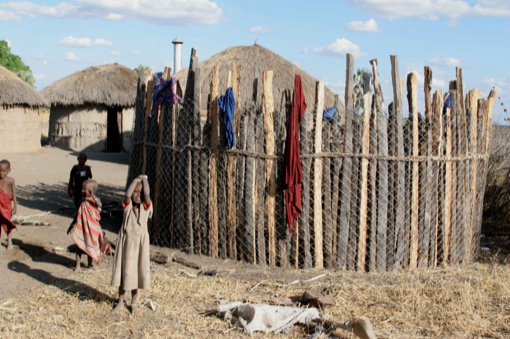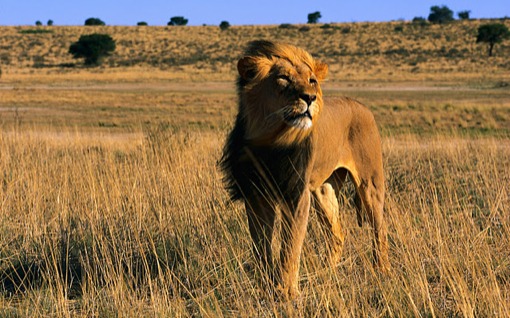National Geographic Big Cat Week: Build a Boma Campaign
Right now, big cats are disappearing from our planet at an alarming rate. We to have decide now if we want to talk about lions, tigers, leopards, cougars, jaguars and cheetahs in the future in way we talk about Dinosaurs now.
As a National Geographic Kids Insider, I recently had the opportunity to speak to Wildlife Biologist, Luke Dollar, to learn more about the National Geographic Big Cats initiative and how they’re trying to change the dire situation facing big cats.
Dollar, who has over 20 years of conservation experience, says the organization evaluates the problem in each environment where big cats live and then implements a solution that is necessary to stem the loss of big cats. The most important thing is to find real solutions that really work in the areas where big cats are threatened.
The biggest step to helping big cat populations from diminishing is to teach communities with big cats how to coexist with the these wild animals. It’s important for their conservation that the initiative to be locally driven. The people in this area need to be given real solutions that are easy to implement.
For example, herders in Kenya and Tanzania are concerned about protecting their livelihood which is dependent upon their livestock. Lions like to hunt at night and if the livestock are left to graze it makes them vulnerable to attacks. One solution to this problem is to enclose the livestock in a predator proof Boma which is like a crowell or enclosure. A Boma is cheap and effective at keeping lions away from the livestock which makes herders feel less threatened by lions in the area. The mortality rate of lions in the areas where Bomas were implemented dropped by 2/3 in just the first year they were built.
Are you ready? Because it’s time to cause an Uproar!
Build a Boma Campaign
The Build a Boma Campaign is striving to stop the dramatic decline in big cat populations.
In Africa, the lion population has dropped 90% during the last 75 years. Once numbering in the hundreds of thousands, there now may be as few as 30,000 of these amazing animals and their numbers are shrinking every day. A Boma costs only $500 to build and improve and $25 a year to maintain. Good bomas are proven to decrease the killing of lions.

Help support this project by making a donation or creating a fundraising page today. If you can’t contribute right now, share the page on Facebook and Twitter.
All donations—100%—will go toward building better bomas to protect lions, livestock, and livelihoods.
National Geographic Big Cat Week
Beginning Friday, Nov. 29, 2013, at 9 pm ET/PT, Nat Geo WILD presents the FOURTH ANNUAL BIG CAT WEEK, the network’s most-watched week for the past three years, to dramatically showcase the world’s most extraordinary big cat species.
More than a television event, Big Cat Week is an extension of the Big Cats Initiative. These shows help build awareness about the declining big cat populations around the world. When people are more aware they want to participate in conservation which builds the global impact.
Kicking off this year’s week with Nat Geo WILD is Man v. Cheetah with Tennessee Titans’ Chris Johnson — the NFL’s fastest running back — and Chicago Bears’ Devin Hester — the super-agile wide receiver and kick returner — both taking part in an extraordinary challenge to literally go one-on-one in a first-ever race with a cheetah at Busch Gardens Tampa’s Cheetah Run attraction.
Check out National Geo WILD for more shows.
Disclosure: I am part of the National Geographic Kids Insider program. I receive special perks as part of my affiliation with this group. The opinions on this blog are my own.





My boys are totally obsessed with jaguars! Actually, I think they like pretty much all big cats!
I don’t think I have ever heard of big cat week! I love that this is something being recognized and will be checking it out.
I love National Geographic and just got their holiday collection for my kids. We are looking them!
It is a shame that other species are dying out because of human over population when simple solutions such as is suggested here can be implemented. I will try to remember to watch the Nat’l Geographic TV special and will tell all my friends about it as well.
Seeing the big cats at the zoo is always a favorite stop of mine. I think it’s sad they they are disappearing. They are such beautiful animals!
I guess I didn’t realize the trouble these big cats were in.. I’m not sure why i didn’t realize it… but its heartbreaking! As I was reading your post, my daughter asked me if Lions are real. Then I had to think back to remember the last time I saw an actual lion at the zoo… its been a long time. :/
This makes me sad so I’m hoping lots of people step up and help get those bomas built!
I never realized they are now becoming endangered. I can see how a Boma could really help diminish the amount of killings.
I had no idea it was Big Cat Week, we are visiting the Big Cat Animal Rescue Saturday, I had already planned to donate to them.
What a great idea- its so scary how many animals are slowly dying out. x
I love National Geographic because they teach you so much about Science and nature. Their images are so vivid that you feel like you are right there living in the moment.
This is such a great cause. National Geographic makes such lovely books too.
So many of our wild population are becoming endangered. What and who is next… Humans? I remember National Geographic from when I was young. Great magazine.
My son said he read something about there being more tigers in captivity than in the wild, so sad. Good for National Geography and their Big Cat Week and Build a Boma Campaign.
Wow, a drop of 2/3! that is huge! Although I am not an advocate of animals in zoos, seeing the lions at our local zoo made me realize how amazing these creatures are!
What a heart wrenching plight. Seems surreal that it’s fact, but I believe you!
I had no idea that the big cat population has declined to that degree. Wow! Bomas seem like a solution that works and I will be making a donation to this cause. Thanks for the info.
It is so sad that these beautiful creatures are disappearing and i think it is a great idea to teach the people to co-exist with them thank you for sharing this.
I love national geographic. Its one of those channels that you can watch everyday without getting bored. I’ll have to tune in. I’ve never heard of BIg Cats Initiative before. Will have to look into it more.
I have never heard of big cat week but I am sure to check it out a little more now!
This is totally interesting. My oldest son has a strong love for big cats. He would totally love this idea. I’m definitely going to have to look into National Geographic For Kids. I think it would make for some wonderful additions to our homeschooling lessons.
There are so many unique and interesting causes out there and I appreciate every time I hear of a new one. Who would think of this if you didn’t live in a big cat area! Good luck spreading the word.
WOW that is a HUGE drop… thanks for sharing and National Geographics is my favorite.. love the TV show and the magazines…
I did not know about how much the drop in cat population. My favorite cat is the Tiger. Lions are beautiful too.
Wow. I didn’t know that.. I guess looking into National Geographic does makes you learn quite a lot. Very interesting, I’d say.
My concern about this campaign, which I do believe in, is the lack of information on how the new boma’s will be built. One of the major problems in areas affected is population growth. This has led to dramatic reductions in the traditional wood and scrub resources used to build the traditional boma. These resources have been disappearing to be used, in part, to build bomas, to provide fuel for fires, and in the biggest threat, to clear land for agriculture. The latter being one of the main causes of animal – human encounter and conflict (a similar issue affects elephant populations as well. Only one picture on your page shows a wire fence and that is lined with wood and there is a paucity of construction information on the campaign website – more information, please.